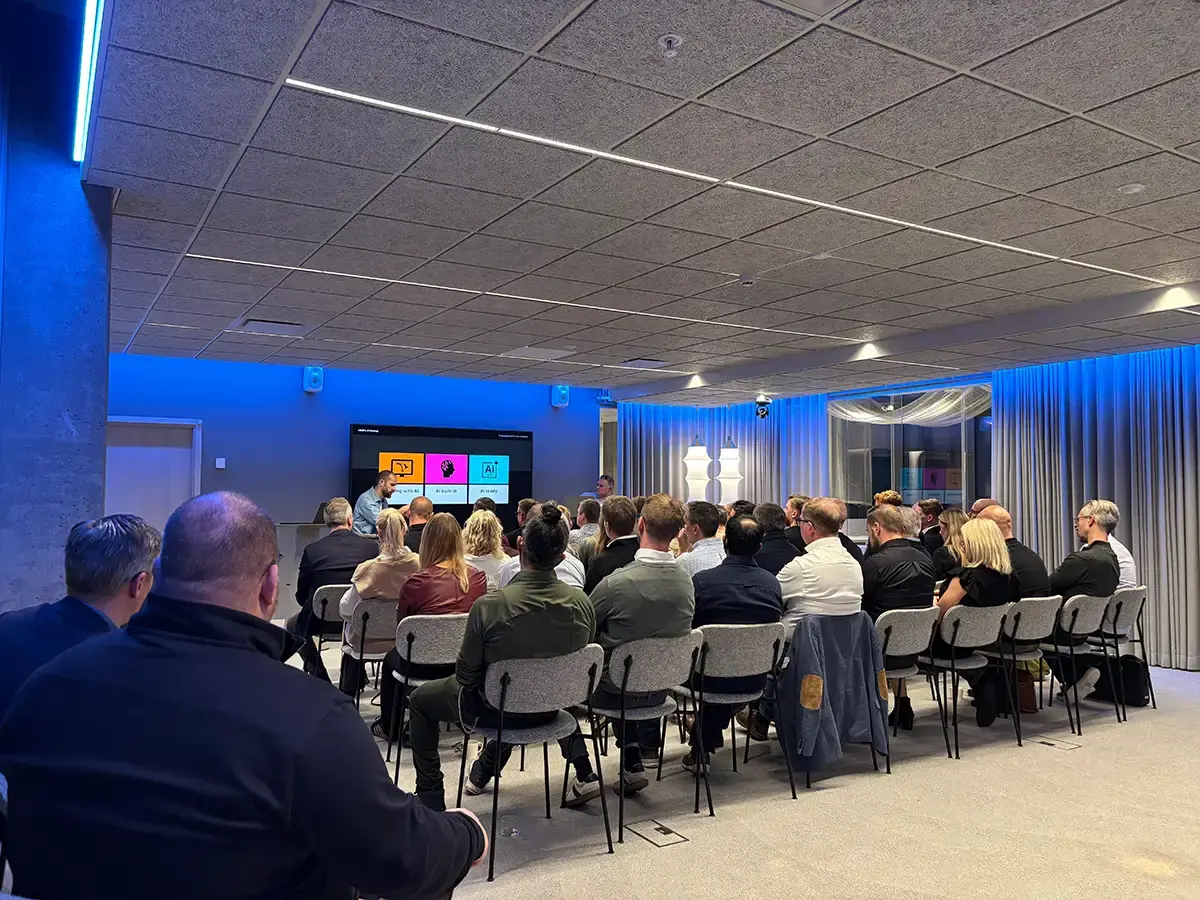
Last update: 21.07.2025
In this blog:
- Proactive communication
- The problem with reactive communication
- Why proactive communication is essential
- Communication inspires reassurance
- Actionable tips for implementing proactive communication
- Measuring the impact of proactive communication
- The key to reducing customer frustration
- Take control of your delivery tracking communication
- Further reading: Customer communication FAQs
Proactive communication
E-commerce businesses know the importance of customer satisfaction. From product quality to seamless checkout, every touchpoint matters, yet one crucial aspect often goes unnoticed. Proactive communication, particularly for handling delivery delays, plays a vital role in reducing costs and building customer trust.
Research shows that proactive communication reduces complaints by 40% and increases customer satisfaction by 85% (). These figures underscore its importance, but how can businesses implement it effectively?
The problem with reactive communication
Reactive communication, still followed by many businesses, waits for customers to bring up issues rather than addressing them in advance. This approach leads to significant challenges, such as:
- Costly customer care: Teams spend hours resolving complaints that better communication could have prevented.
- Frustrated customers: Customers dislike being left uninformed, especially during delivery delays.
- Higher customer churn: Dissatisfied customers are more likely to leave, increasing turnover costs and harming brand loyalty.
When silence becomes the default response during critical moments like delivery delays, it heightens customer anxiety and frustration, leaving them feeling unsupported.
Why proactive communication is essential
Proactive communication prioritizes transparency and action by informing customers before they even think of asking questions. This approach helps close the customer experience gap in several ways:
- Reducing support costs: By addressing predictable issues like delivery delays upfront, businesses can avoid a surge in customer inquiries. This reduces the burden on support teams.
- Building loyalty: Keeping customers informed fosters trust, painting the business as reliable and transparent.
- Improving efficiency: With fewer complaints, support teams can focus on resolving more complex or unique issues rather than repetitive "Where's my order?" (WISMO) inquiries.
In short, proactive updates are a simple yet effective way to manage customer expectations and reduce complaints. Rather than waiting for customers to ask questions, brands take the first step by informing them of potential issues like delays or changes. This approach has a significant impact on reducing stress and improving satisfaction.
I have observed that when parcel deliveries are late but consumers are informed proactively about the delay, 98% of them never reach out to the customer care department to complain. This highlights the power of proactive communication in not just reducing customer service inquiries, but also in demonstrating professionalism and care. By keeping customers informed, brands can turn potential frustrations into moments of trust-building and loyalty.
Communication inspires reassurance
Consider this analogy. Imagine standing in line at an airport security checkpoint. You notice a sign that reads, “Estimated wait time: 25 minutes.” Even though the wait remains unchanged, having this information shifts your frustration to acceptance. This is a form of proactive communication, and it taps into an important psychological principle: uncertainty breeds anxiety, while information restores a sense of control. You can see examples of this across society – phone queue times, public transport and restaurants.
The same methodology applies to delivery delays. Customers are far more tolerant of minor disruptions when they’re kept in the loop. By proactively explaining what’s happening and why, you reduce uncertainty—and in turn, reduce frustration. It’s not just good communication; it’s good psychology.
Key benefits of proactive communication:
Lower customer care costs
Proactive communication can prevent a flood of reactive customer inquiries. For example, one retail business that implemented real-time updates about delays saw a 60% drop in customer queries. This cut labor costs significantly and eased the workload of their support teams.
Elevated customer satisfaction
Transparency shows customers that they are your priority. Informing customers of a three-day delay while explaining the reason behind it demonstrates attentiveness. This kind of upfront communication reassures customers, improving their likelihood of staying loyal.
Improved operational efficiency
A reduction in repetitive queries enables customer service representatives to focus on high-priority issues. Similarly, access to proactive data enhances logistics planning and the efficient allocation of resources.
Why transparency matters
Lack of proactive communication can erode customer trust. When customers place an order, they don’t just want to know when it will arrive; they want to feel confident that any issues or unexpected delays will be communicated promptly. Transparency fosters that trust, keeping customers informed at every stage of the shipping process.
Research confirms this. According to studies, 88% of customers consider real-time shipment tracking crucial for a positive experience. When customers can track their package at every step, it removes uncertainty, builds confidence, and enhances their overall satisfaction.
Actionable tips for implementing proactive communication
Looking to set up proactive communication within your e-commerce business? Start with these tips:
Leverage technology
Invest in a delivery tracking software and CRM systems that can be integrated - monitoring deliveries and triggering CRM activities. Platforms like Zendesk or nShift Track can streamline multi-channel communication, working in harmony to drive proactive communication.
Automate updates
Use email, SMS, or app notifications to automate updates. For example, sending live notifications about delays reduces customer anxiety and eliminates the need for them to reach out.
Tailor your communication
Customize messages based on customer preferences. For high-value orders, offer additional reassurance through personalized emails or calls.
Communicate transparently
Ensure your updates clearly explain reasons for delays and include resolution steps. For instance, “The package is delayed due to adverse weather conditions but is now expected to arrive on [specific date].”
Empower customer support teams
Equip your support teams with the tools and training they need to handle proactive outreach. Ensuring consistency in tone and accuracy is essential.
Seek and act on feedback
Regularly collect feedback about your ecommerce delivery communication process. Use this input to refine and enhance your strategy.
Measuring the impact of proactive communication
To determine the success of your efforts, monitor these key performance indicators (KPIs):
- Customer Satisfaction Scores (CSAT): Improvements indicate a better customer experience.
- Complaint volume: Fewer WISMO inquiries confirm the effectiveness of proactive updates.
- Customer retention rates: Higher retention highlights stronger trust and loyalty.
- Cost to serve: Track reductions in labor hours spent on preventable inquiries.
Additionally, leverage A/B testing to evaluate which communication methods resonate most effectively with your audience.
The key to reducing customer frustration
Uncertainty is a major driver of customer frustration. Proactive communication eliminates uncertainty by offering timely and transparent updates, leading to higher customer satisfaction and smoother operations.
Forward-thinking e-commerce businesses understand that the real issue is not a delivery delay but lack of proactive communication. By implementing effective proactive communication strategies, you can protect your brand reputation, reduce operational costs, and turn challenges into opportunities to strengthen customer trust.
Take control of your delivery tracking communication
Want to streamline your proactive communication strategy for deliveries? Take charge of reducing costs and improving satisfaction today. Book a tailored consultation to find out how the nShift platform can help you turn your delivery operations into a revenue machine.
It’s all in the delivery
From checkout to emissions, nShift gives you full control of delivery management at every step — with branded experiences, smarter shipping, and access to 1,000+ carriers.
Explore the nShift platformFurther reading: Customer communication FAQs
What is good customer communication?
Good customer communication in delivery management ensures timely updates at every stage of the delivery process, from dispatch to arrival. It involves transparency in sharing accurate information about delays or changes. Personalized and proactive messaging keeps customers reassured and informed. It also builds trust by allowing customers to track orders and providing support when needed.
Why is communication with customers so important?
Communication with customers is vital to delivery management as it fosters trust and reduces uncertainty about order status. It helps to quickly address potential issues, minimizing dissatisfaction and enhancing the overall delivery experience. Clear communication also ensures alignment on expectations, like delivery timelines or special requirements. This creates loyalty by demonstrating reliability and attentiveness to customer needs.
What are 5 examples of customer service?
- Real-time order tracking that allows customers to monitor their deliveries.
- Proactive notifications about delays, ensuring transparency.
- Flexible delivery options, like rescheduling or customizing time slots.
- Responsive customer support available through multiple channels, such as chat or phone.
- Easy return and refund processes that prioritize customer convenience and satisfaction.

About the author






